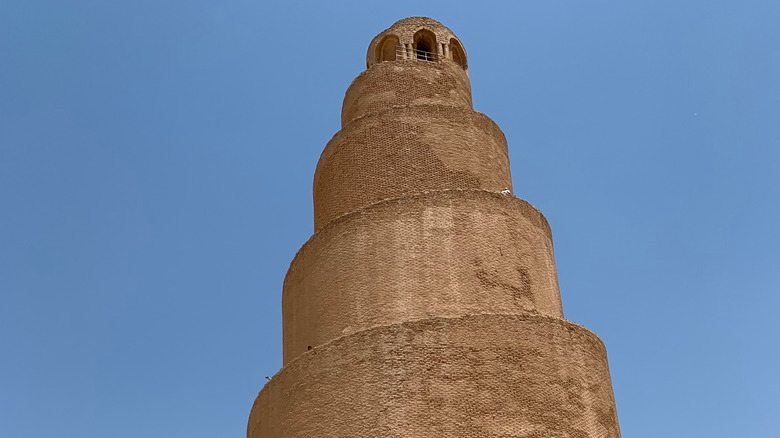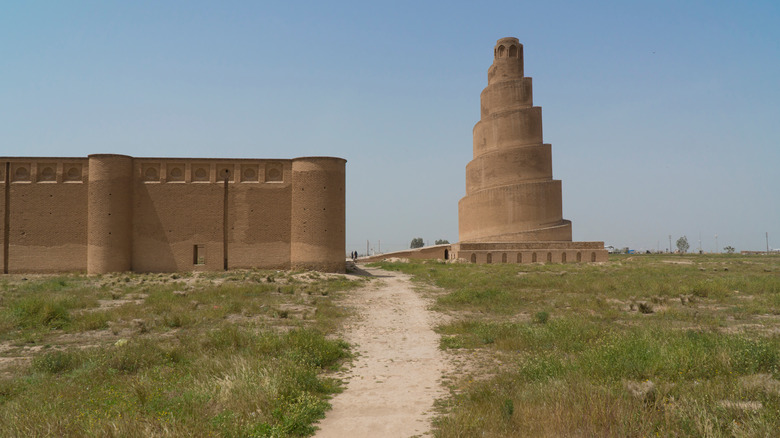The Truth About The Great Mosque Of Samarra
A few miles outside Baghdad sits an elegant spiral tower whose sleek design belies the fact that it was originally built over 1000 years ago. According to Times of India, the Abbasid caliph Al-Mutawakkil fled Baghdad in the 9th century after conflict with the locals and moved to the city of Samarra. He would live there for half a century and began to adorn the town with palaces and other great works, including the Great Mosque, the largest mosque in the entirety of Islam. Covering an area of around 38,000 square meters, the Great Mosque was not bettered by any other until its destruction 400 years later at the hands of invading Mongols in 1278.
All that remains of the Great Mosque are the outer walls and the spiraling tower, called a minaret. The walls are over 30 feet tall and nearly 10 feet thick. They would have housed the sprawling aisles of the mosque and the dark blue glass mosaics on the floors. The tower is around 170 feet tall, with a smooth spiraling path up to its peak. It is said that Al-Mutawakkil was fond of riding his donkey to the top to enjoy the view of Samarra and his beautiful creations.
The minaret was damaged again by war
Though the Great Mosque fell into disuse after the Mongol invasion, the minaret stood strong and became an Islamic and Iraqi symbol. It remains one of the highest towers in the area, which led to its involvement in another war, this time nearly a millennium after the original mosque was ransacked. In 2005, American troops used the minaret as a vantage point for the area surrounding Samarra (via Atlas Obscura). The top of the minaret was bombed by insurgent forces, damaging the ancient tower, and sending clay debris crumbling down its signature spiral.
Some reasoned that the bombing was to drive out the American soldiers from using it, while others thought it was targeted specifically to further instigate the secular warfare that has plagued the Middle Eastern country in recent years. Iraqi officials were also keen to point out that the walls of the Great Mosque had been damaged by the Americans and their allies during their occupation of the ancient site (via BBC). The Great Mosque could end up being yet another archeological casualty of the Middle East crisis.

